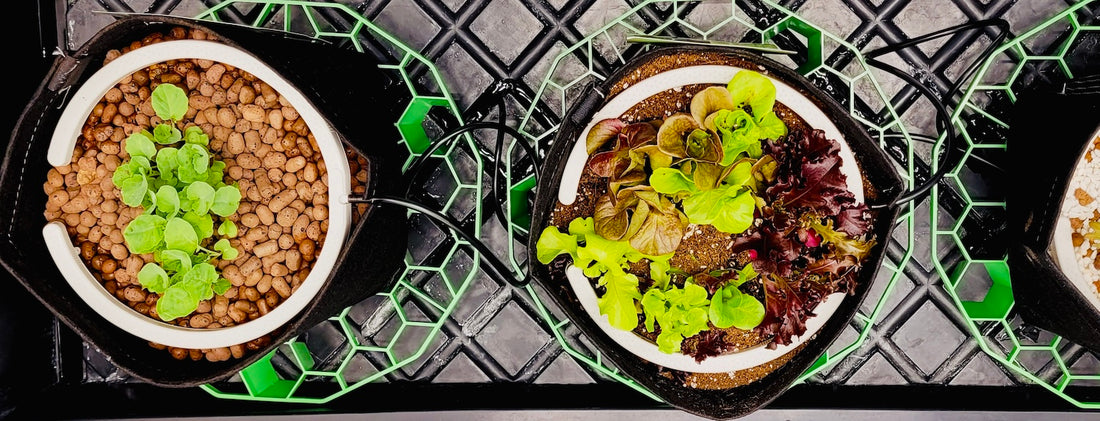Hydroponic growing is lots of fun and very satisfying when things go well.
With that in mind a lot of new and experienced gardeners have started to ask the question, which is the most reliable and rewarding method of feeding plants?
I have purposely titled the topic RTW v Recirculating as these are the two most preferred methods of feeding indoors.
What is Run to Waste (RTW)?
The run to waste application is whereby a brain tank or main reservoir is set with the corresponding week at max dose, statistically the pH and EC target values do not change, which means every feed dispensed from the reservoir is at max strength. The same applies for those in a smaller operation, the nutrients are usually added to fresh water daily at max strength according to the specific dosage for that grow week, and then fed to the plants daily.
The waste aspect of the RTW terminology indicates that we are feeding to run-off, approx. 10-20% of the pots holding capacity and then disposing of all of this solution, never again to be re-fed to the plants. By doing this we are also removing any built-up elements not used in the previous feed.

Image credit: MagicBeaver
What is a Recirculating system?
The recirculating style of growing has become very popular and is a very efficient way of feeding plants and reducing outgoings, so it is a much more cost effective approach to growing. It does have its downsides though.
For a recirculating system to be truly on point the target EC and pH values should NOT change as the volume reduces, this is actually quite hard to achieve with very little experience and/or as a hobbyist.
Once a recirculating system is set up, the main concern is the rise of pH in conjunction with the depletion of EC.
Using a bit of foresight, we can see that if the target EC and pH is changing then so is the absorption of specific elements, if the pH rises elements will not even be consumed. Growers who choose to “top” up their EC with food a few days in to a live system can run into a multitude of problems, usually minor deficiencies that can progress due to nutrient antagonism.
There are some really good systems that understand a low EC is needed within this setup so if you are thinking about one, maybe consult your local shop to see the systems they have as most of the branded versions and they are quite good.

Image credit: FloraMax
So, which system is best?
It is preference at the end of the day but for the grower focused on results and less problems, I would say RTW is the best feeding method for indoor growing as it allows the grower to have full control of what is being fed to the plant.
Recirculating systems are by far the most efficient systems in terms of water and nutrient consumption, but problems can arise when re-feeding the same water back to the plant that will not occur with RTW systems.
Both systems have their pros and cons and most growers will likely find use for both styles of hydroponic systems, dependant on the crop.
Much love, and keep growing!
#growwithus




